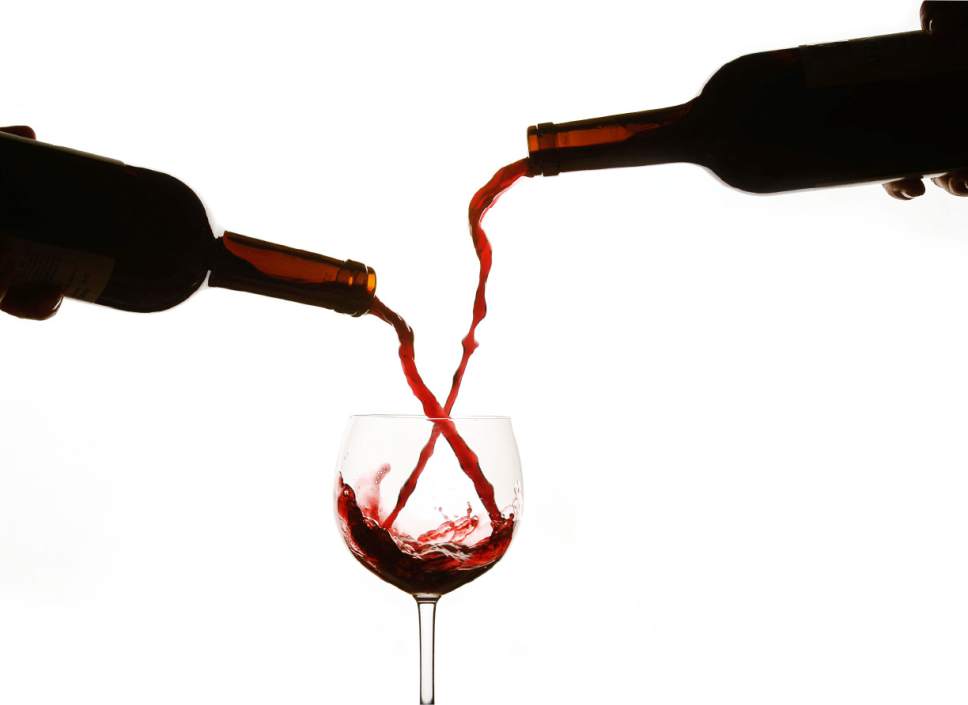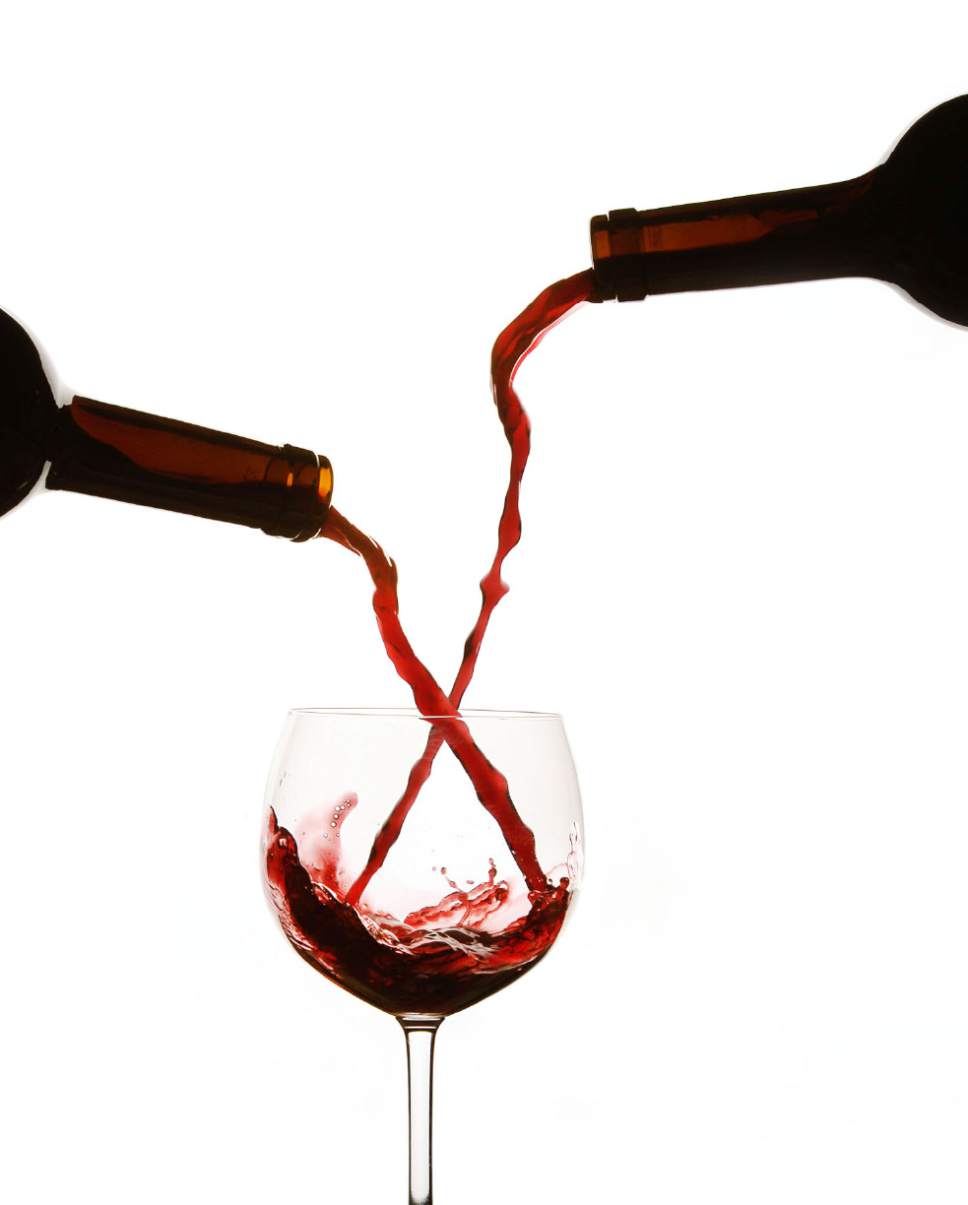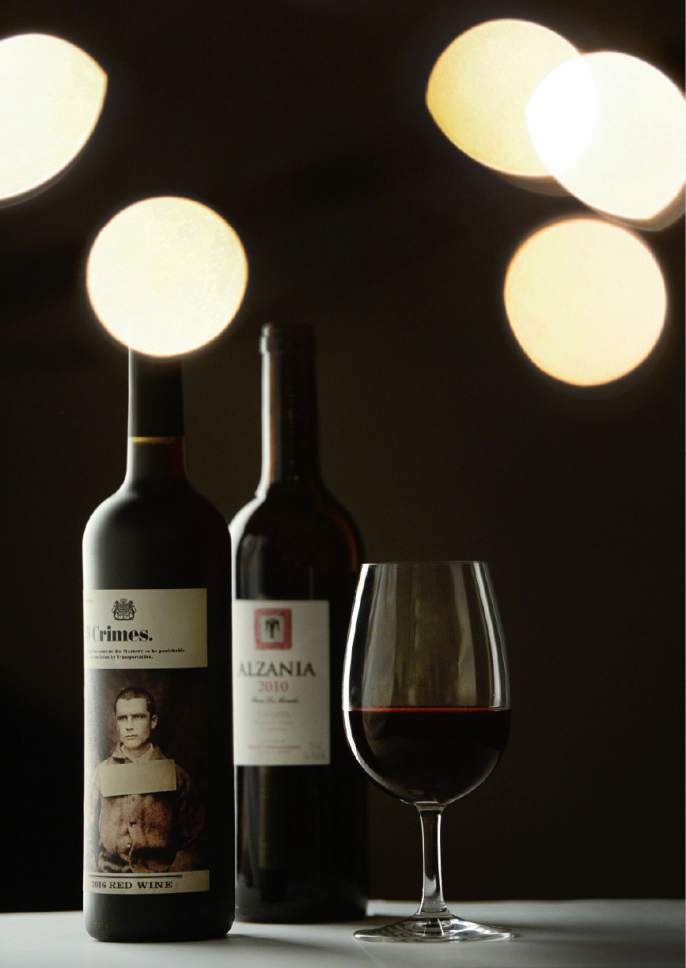This is an archived article that was published on sltrib.com in 2017, and information in the article may be outdated. It is provided only for personal research purposes and may not be reprinted.
Let's count the ways we love wines with "red blend" on the label.
Red blends, made by combining two or more grape varietals, are affordable, interesting, great with food and made using a centuries-old tradition.
Across the U.S. and in Utah, "this category has been on fire," says Utah wine broker Tracey Thompson, owner of Vine Lore.
The trend started about eight years ago and coincided with the recession, when many wine drinkers — partial to cabernet sauvignon, pinot noir and other wines made from a single grape — were looking for less expensive options without sacrificing taste.
In red blends, "they found wines that were incredibly high quality at an affordable price point," Thompson said.
While the economy has recovered, the infatuation with red blends continues, according to the most recent data from Nielsen, which studies consumer buying trends.
"Not only are consumers buying more red blends, much like other wine segments, they are gravitating to more premium price points than in the past," the research notes. Red blends were among the fastest-growing wine categories, accounting for more than 13 percent of the $13 billion spent on table wine, in the 52-week period ending Sept. 12, 2015. And red blends have accounted for more than 31 percent of the new wines entering the U.S. market.
"In a way, red blends are currently the craft beer of the wine category," the company said. "They're hip, different and trending."
Red blend history • While many people may be discovering red blends, they are nothing new. Winemakers have been blending grapes for centuries, says Utah wine educator Sheral Schowe, owner of the Wasatch Academy of Wine. A few examples she mentioned:
Bordeaux • A blend of two or more grapes grown in the Bordeaux region of France, which can include any mixture of cabernet sauvignon, cabernet franc, merlot, malbec and petit verdot.
Côtes du Rhône • From the Rhone Valley of France, this blend is typically made with grenache and a mix of syrah, mourvedre and cinsault.
Rioja • From Spain's most well-known winemaking region, this blend is made with tempranillo and smaller amounts of garnacha and other regional grapes.
Chianti • Italy's famous blend includes sangiovese, canaiolo and other approved grapes from the region.
Meritage • This red blend, which rhymes with heritage, was created in the 1980s by a group of California winemakers who wanted to replicate the Bordeaux wines of France using Napa Valley grapes. Because of European appellation restrictions, they couldn't use Bordeaux on the label.
In the hands of a skilled winemaker, red blends are greater than their individual parts, Schowe said. "Blending really strengthens a weaker grape and can tone down a strong grape."
Red blends also are more interesting to drink, she said, comparing them to a soup made with several ingredients and spices versus one made with a single ingredient.
"There are several points of interest, instead of just one," she said. "And people are more interested in the uniqueness and mystique of the blend."
Of course, winemakers wouldn't keep producing red blends if they didn't help the bottom line, said Jim Santangelo, beverage director of the LaSalle and Trio restaurant groups and owner of the Wine Academy of Utah.
Weather and other factors can affect the quality of grapes from year to year, he said. "If you rely on one grape from a small area, you can run into trouble. It's like putting all your eggs in one basket."
He said blending allows winemakers to "source fruits from a broader area, which lowers costs and maintains consistency from one vintage to the next."
Nine under $19
These nine red blends are available at Utah's state-owned wine stores.
19 Crimes Red, Australia ($10.99) • This blend of shiraz, pinot noir, grenache and cabernet sauvignon is a steal. It has a medium body with strong fruit flavors and hints of sweet blackberry. The name is a nod the 19 crimes that would send English criminals to a penal colony in Australia in the late 1700s.
2014 Rhiannon Red Blend, Napa, Calif. ($10.99) • Another affordable crowd pleaser with deep color and flavor. It is made with a proprietary blend of syrah, petite sirah and barbera. Its name pays homage to the Welsh goddess Rhiannon — a nod to the Rutherford Wine Company's Celtic ancestry.
Château Haut Dominigue, France ($11.99) • This traditional Bordeaux blend — cabernet sauvignon, merlot and cabernet franc — delivers well beyond its price tag with ripe blackcurrant, fresh plums and a hint of cinnamon.
Truvee Red Blend, Central Coast, Calif. ($12.99) • The winemaking McBride sisters, who found each other late in life, blend merlot and zinfandel to make complex wine with flavor of berries, cocoa and caramel. The fruit is sustainably grown in Paso Robles, San Benito, Edna Valley and Monterey County and is matured in a mix of French and American oak.
Pendulum Red Blend, Columbia Valley, Wash. ($14.99) • An appealing blend of mostly cabernet sauvignon (59 percent) and merlot (23 percent) with smaller amounts of syrah and malbec. It is spicy and fruit forward — think plums, raspberries and sweet tobacco — but delicately balanced.
2013/2014 Chateau Pech-Latt, France ($14.99) • Made from organically farmed grapes in the Corbières appellation of the Languedoc-Roussillon in France. The blend includes carignan, syrah, grenache and mourvedre and offers explosive dark fruit flavors. A good value.
2013 Jeff Cohn "Smoke and Mirrors" Red, Calif. ($15.99) • Wine experts have compared this lively wine to a top-flight Côtes du Rhône. Its intense fruit flavors come from an unusual combination of zinfandel, petite syrah and smaller amounts of grenache and alicante bouschet.
2010 Alzania Finca La Moneda Spain ($18.99) • This blend of merlot, syrah and garnacha comes from Navarra, one of Spain's lesser-known wine regions. Typically associated with rosé production, Navarra has been attracting attention in recent years for its high-quality red wines.
2012/2103 Clos la Coutale Cahors, France ($18.99) • This rustic red is made mostly with malbec — for which the Cahors region in southwest France is famous — as well as some merlot. It is aged in oak barrels, giving it a balance between fruit and tannins. —
Utahn named Wine Instructor of the Year
Sheral Schowe, owner and founder of Wasatch Academy of Wine, has been named the Instructor of the Year by the international Wine Scholar Guild.
The award recognizes creative and effective classroom instruction and outstanding presentation and organizational skills. Student evaluations are weighted heavily when selecting the award.
Schowe teaches the Wine Scholar Guild's French and Italian wine certification courses in Utah. She also is an adjunct professor of wine studies for Salt Lake Community College Culinary Arts Department, the wine educator for Harmons Cooking Schools throughout Utah and for University of Utah's Osher and Lifelong Learning programs.
Her classes are "multisensory" and usually include a food component, which helps students better understand the different wine regions.
"Thanks to several local retailers and chefs, we are able to provide cheeses from the majority of the regions of Italy and France as well as chef-prepared food pairings to highlight traditional recipes of specific regions," she said.







